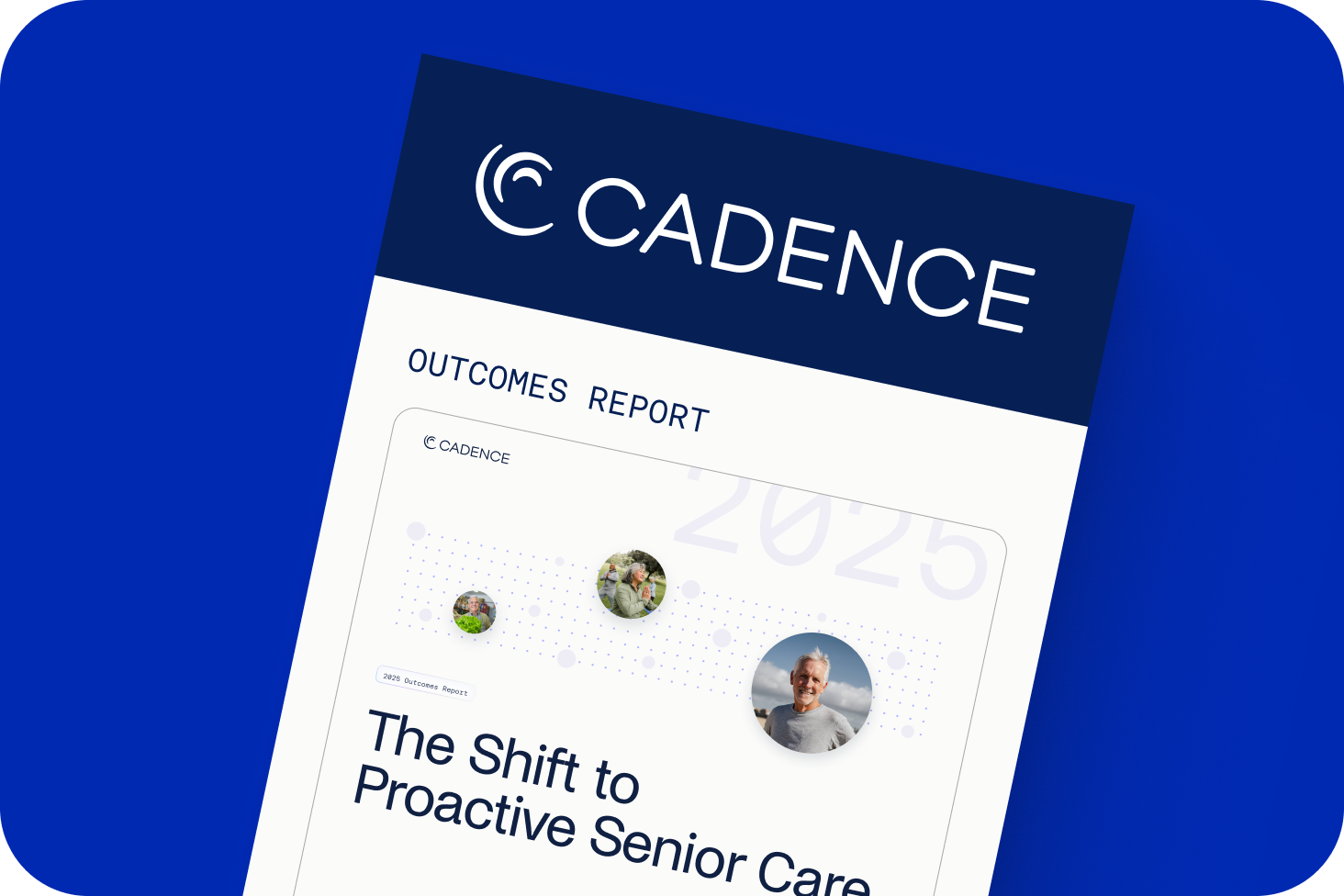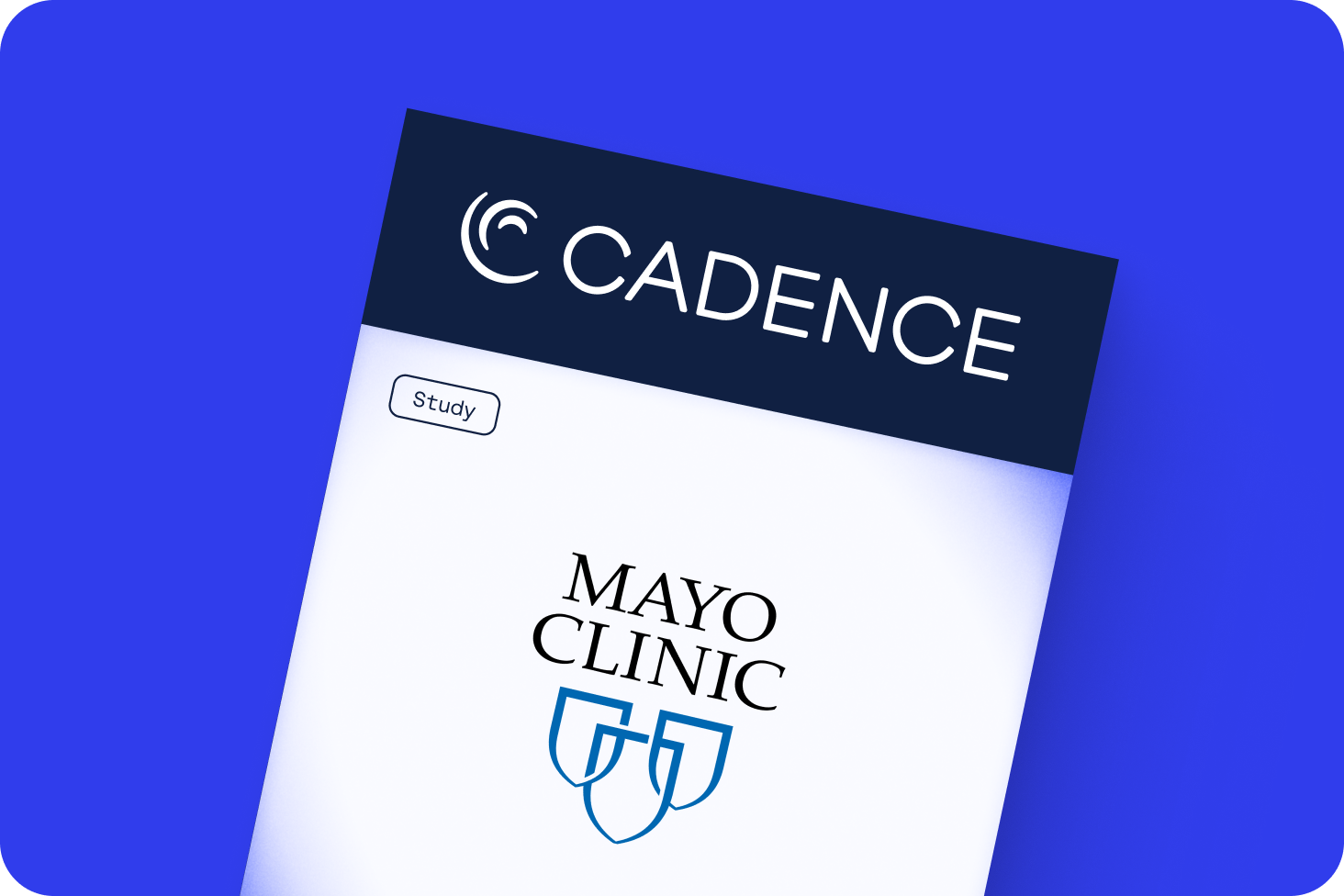What happens when you combine NP-led 24/7 virtual care with remote monitoring

Cadence shares data on alerts by hour and distribution of visit types for a cohort of 10,000 patients in a single month.
Janet is an 83-year-old resident of a small town called Republic, which is located in the upper peninsula of Michigan. 6 months ago, her primary care physician diagnosed her with congestive heart failure.
Heart failure is a daunting diagnosis for anyone, but it is all the more scary for Janet given that she lives 22 miles away from the nearest hospital. During the summer months, this is a long drive; during the winter, it is an excursion. Since receiving her diagnosis, Janet has awoken multiple times during the night feeling unwell, leading her and her husband to the emergency department. Both emergency department visits resulted in a hospital stay lasting several days and, even with Medicare coverage, thousands of dollars in out-of-pocket costs.
Unfortunately, Janet’s situation is hardly unique. Tens of millions of people across the country live with chronic conditions including heart failure, hypertension, and type 2 diabetes. These conditions often trigger unpredictable symptoms leading to ambulance rides, emergency department visits, and even lengthy in-patient stays.
Toward the end of her second in-patient visit, Janet was introduced to Cadence. After enrolling, Janet was given a blood pressure cuff and weight scale to take her vitals at home. In the event of an abnormal vital reading, a Cadence nurse practitioner or registered nurse now checks in on her to discuss her treatment. The Cadence Care Team is available 24 hours a day, 7 days a week in the event of a worrisome symptom or a question about her condition.
Cadence monitors a complex array of vital readings including blood pressure, heart rate, blood glucose and weight, depending on the condition, for patients with heart failure, hypertension, or diabetes. When a vital reading breaches low or high thresholds defined by evidence based guidelines, an alert is generated, triggering follow up by the Cadence RN to the patient. According to Cadence’s most recent data, patients are, on average, 250% more likely to trigger an alert when they transmit a vital reading between 11 p.m. and 3 a.m. The chart below shows the percentage of vitals resulting in alerts by hour of the day:

Cadence’s Medical Director, Dr. Randy Curnow, explains: "Patients often are most vulnerable emotionally and physiologically in the late evening and early morning, times when they may need the most support but paradoxically have least access to care. At Cadence, we are there with clinical staff 24/7 to talk with them about any problems or concerns, to reassure them when appropriate and when they need it the most. And if they do need more attention, Cadence can help coordinate a same-day primary care appointment or, if emergent, help direct them to the appropriate site of care.”
Managing these overnight alerts has proven effective. For every 10,000 patients Cadence supports, the Care Team manages over 11,500 clinical encounters per month. More than 5,000 of these encounters are due to alerts (e.g., systolic blood pressure of 190). Of these many encounters, under 200 require escalation to the partner physician, while around 40 of these patients are sent to the ED.

Cadence is not only reactive, but also proactive. The chart above shows that of the 11,648 encounters, 6,541 are “Standard,” which means they have scheduled visits with Cadence’s Care Team. One of the major benefits Cadence provides to heart failure patients is the ability to safely and quickly titrate medications to guideline directed medical therapy from the comfort of Janet’s own home. We can, in the comfort of Janet’s own home and under the direction of her provider, improve her health by titrating medications to the latest evidence-based guidelines.
Ultimately, Cadence helps patients unlock greater personal independence, confidence, and quality of life. Our goal is to help seniors age in the comfort of home, supported by the robust and resilient primary care infrastructure that is RPM.
Disclaimer: Patient information presented in the above is for illustrative purposes only and does not reflect that of a real patient in Cadence's current patient population.






